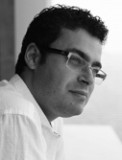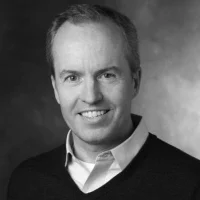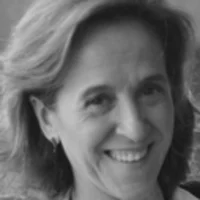Maxim Saksonov is a radiologist at Rabin Beilinson Medical Center in Israel. His main interest is in interventional radiology.
Dr. Saksonov is also a co-founder of Ambrolia, developer of OLRAD, a mobile social professional network for radiologists enabling easy case-sharing over the smartphone for consultation and educational purposes.
1. What are your key areas of interest and research?
I mostly deal with interventional radiology and my research and development activities are targeted at new emerging technologies and their incorporation into medical imaging and patient management.
We now live in an exciting period where, according to Moore’s Law, each new technology takes less and less time to make an impact on our lives. Compare the invention of typography by Gutenberg that took hundreds of years to develop, to the same impact as smartphones had in just five.
I am searching for ways how to use these emerging technologies and trends to improve patient care, fascinated by the idea of empowering the patient in the process of acquisition and interpretation of medical imaging and subsequent decision making.
Our patients are smart, intelligent, and often know more about their condition than their doctors, owing to the availability of vast amounts of information on the Internet.
In the age of social media, there is no reason why medical imaging should remain as classified correspondence between the radiologist and the treating physician. We should use technology to make this data accessible and comprehensible for the patient. The patient is not a costumer, but a partner in our joint mission to improve his health. We must understand that and give him the appropriate tools to accept responsibility for the healing process.
2. What are the major challenges in your field?
There are two main trends in modern medical imaging:
a. 1. Minimising radiation exposure and rapidly increasing use of imaging in every medical aspect – In the era when radiation exposure from chest CT approaches the amount of ordinary chest x-ray, where MRI’s become not a luxury but a standard of care, there is one result – rapidly increasing amounts of imaging data. In fact, already today, the numbers of imaging studies exceed the reading capabilities of trained radiologists. The situation is much more critical in developing countries where there is extreme shortage of professional manpower. We are close to a point when every patient entering the ER, will receive total body scans with minimal radiation exposure. Who will read these? Is it possible to train enough Radiologists to accommodate these numbers of studies? I believe that the solution is in technology.
b. 2. Big data and information sharing – We live in a rapid and instant world. In times when each one can share his entire life on Facebook, medical imaging remains highly segregated data viewable mostly on closed PACS systems. The technology is already there to allow quick imaging data sharing from each point in the world with an internet access. In fact, our startup – OLRAD – professional social network for radiologists, addresses this issue by enabling the radiologist to instantly share imaging data just by using the smartphone. Today technology allows us share this data rapidly while complying with patient privacy regulations. I am very happy to hear that leading manufacturers in the field of radiology came up with inspiring solutions such as secured clouds accessible from every corner of the earth.
In the big data era, it is just logical that we use this data not only in research purposes, but to develop smart algorithms and self-educating CAD software to facilitate study reading. The future of Radiology is in the outcomes of this big data processing. We must acknowledge that and reinvent ourselves accordingly.
3. What is your top management tip?
Be inspired and inspire others.
4. What would you single out as a career highlight?
The establishment of our startup, OLRAD, with my brother who is a software specialist. Trying to understand medicine through the eyes of a young and energetic member of the startup nation, is more than exciting. Medicine is a highly conservative field with its roots traceable to the Hippocratic era. That is the only thing I knew before. OLRAD has made me think out of the box. We have a lot of learning to do from other fields, the main beneficiary being the patient, of course.
5. If you had not chosen this career path you would have become a…?
… archaeologist.
6. What are your personal interests outside of work?
Photography. I am surrounded by the world of imaging. I use the camera to inspect the world from micro to macro, and each day reveal amazing things about my environment.
7. Your favorite quote?
“The best way to predict the future is to create it”. (Peter Drucker)









